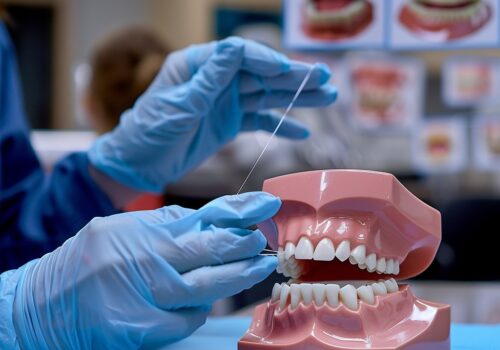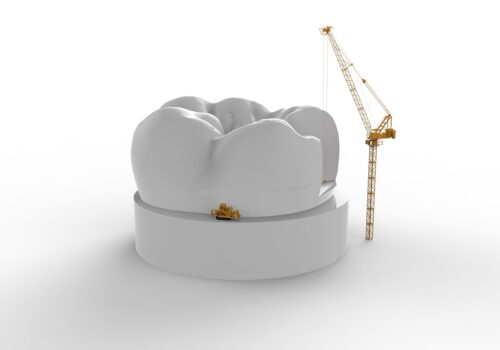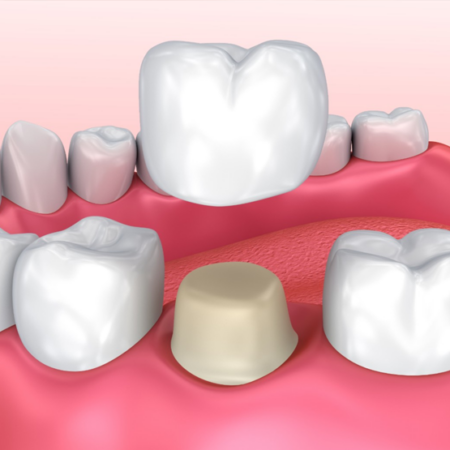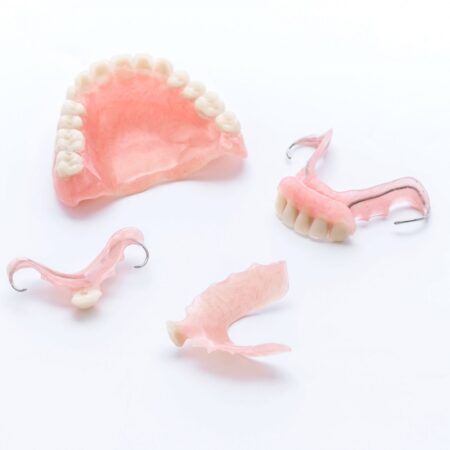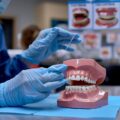
A gap or space between the teeth is common and not usually a cause for concern. In children, a gap often closes by itself with age, but some gaps never close and necessitate Teeth Fillers.
Several factors contribute to gaps in teeth, with some gaps developing when there’s a difference in the size of the teeth and jaw. Other factors can include gum disease, missing teeth, and childhood habits like thumb-sucking.
Regardless of whether you have a large or small gap, you might feel self-conscious and look for ways to close it. There isn’t a single solution, though, so you’ll want to speak with a dentist to discuss your options.
Keep reading to learn about the most common Types of Teeth Fillers to fill a gap in your teeth.
1. Braces
Braces work by using tension to gradually pull your teeth together. This constant pressure moves teeth to the correct position, which ultimately closes a gap. You can use braces for small or large gaps, and they can sometimes fix gaps caused by a missing tooth.
One advantage of braces is that they involve the entire mouth and move all of the teeth, which can benefit people with several gaps. Braces offer other benefits, too, like straightening crooked teeth and aligning the jaw for an even bite.
You can also choose from different types of braces. These include:
- traditional metal braces
- ceramic braces
- lingual braces
- self-ligating braces
- Invisalign treatment
While the other types involve brackets, Invisalign braces are removable aligners. This is an alternative to traditional braces if you have smaller gaps, or if you don’t want noticeable braces. You can remove Invisalign braces when eating or drinking; plus, it’s easier to brush and floss your teeth with these aligners.
Keep in mind that Invisalign is more expensive than traditional braces. And because they’re removable, there’s the risk of losing them. They also aren’t as comfortable as traditional braces.
2. Veneers

Another option for fixing a tooth gap is veneers. This procedure involves constructing a custom made layer of thin material (shell) that your dentist bonds to the front of your teeth. Veneers are durable, so they don’t easily stain or chip. The material matches the natural color of your tooth, and because veneers are slightly wider than your natural teeth, they’re able to conceal a gap without the use of braces.
Different types of veneers include porcelain and composite, and there’s even the option of removable veneers.
The benefit is that veneers are stain resistant, match the natural color of teeth, and there’s a low chance of chipping or breaking a veneer. They can also last 10 years or longer.
3. Dental bonding
Similar to veneers, dental bonding uses a soft composite material to help close a tooth gap. But dental bonding doesn’t create a shell to place over your natural teeth. Instead, your dentist applies the soft composite directly to your teeth, and then molds or shapes the material until it hides the space in between teeth.
The composite sticks to your teeth, and looks and feels like your natural tooth once it dries. The benefit is that dental bonding is cheaper than veneers, but the bond isn’t as strong. So there’s the risk of cracking, chipping, and staining the bonding material.
Dental bonding also doesn’t last as long as veneers. You might have to repeat treatments every 5 to 10 years.
4. Dental implants
Although some braces can close a gap caused by a missing tooth, this doesn’t work in every situation. If you’ve lost a tooth or had a tooth removed, depending on the circumstances, a dentist might recommend a dental implant to close the gap.
This is an artificial root used to support a replacement tooth. The procedure involves oral surgery during which your dentist places the artificial root directly into your jawbone. Once the dental implant heals, your dentist then attaches an artificial tooth to it.
The benefit is that implants are designed to be permanent, although you might need to replace the artificial tooth every 15 years. The downside is that it’s oral surgery and is expensive. Also, the process from start to finish can take several months including healing time.
Can you fix a tooth gap at home?
For smaller gaps, you might ask: Can I fix these at home with DIY products?
Although you’ll find some products on the market designed to close gaps without a dentist, these products have their risks. Some people claim to close gaps with gap bands, which are small rubber bands that wrap around multiple teeth. This creates tension, which helps close a gap. The process is similar to how traditional braces work.
While gap bands are sold in stores and online, they’re not recommended. This type of DIY treatment can potentially damage your gums and the bones around your teeth, causing tooth loss. You might also consider DIY teeth fillers. These are moldable plastic pellets that you heat, mold, and then attach to your teeth to fill a gap.
The problem, though, is that this only provides a temporary fix. The material doesn’t permanently bond to teeth. They can fall out of place, posing a swallowing risk.
Which Type of Teeth Fillers is right for you?
A dentist can help you decide the right way to close a tooth gap based on:
- the cause of the gap
- the size of the gap
- your overall dental health
- your budget
Generally speaking, braces are great for closing several gaps in between teeth, or if you want to correct other teeth issues too, like an uneven bite or crooked teeth.
If you have one or smaller gaps, veneers are another option or perhaps dental bonding. On the other hand, if a gap is too wide for veneers, a dentist might suggest a dental implant.
Also, read / 7 Impressive Benefits Of Invisalign That You Should Know
Takeaway
A tooth gap isn’t usually a health concern, but rather a cosmetic concern. The good news is that several solutions are available for different budgets. Talk with a dentist to explore safe treatments, and avoid DIY treatments, which can be dangerous and unreliable.




